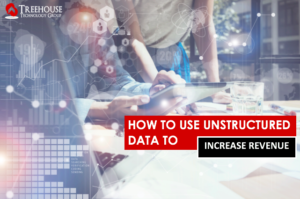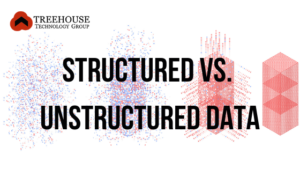Data mining for business analytics is the process of extracting valuable information from a vast amount of available corporate or consumer data.
Businesses are generating huge amounts of data from various applications, IT systems, and databases. They say that data in most organizations is currently doubling every two years. This data may be stored on different platforms, in a variety of formats, such as structured data, unstructured data and semi-structured data. In fact, it is estimated that up to 90 percent of business data lies in an unstructured format. Much of this data may also be prone to errors due to inappropriate storage or formatting, or manual errors at the data collection stage itself. Hence, not all data that organizations hold may be accurate and reliable.
Furthermore, the raw data may be heterogenous – that is, it may be in diverse formats, such as audio-visual data, graphical data, spatial data, etc. All these complex data types need to be “mined” for valuable insights they contain.
Accordingly, raw data is considered to be “noisy”, incomplete, and unreliable. To extract any kind of value from this data, it first needs to be pre-prepared, cleansed and brought into a central repository which is standardized in format.
Ultimately, data mining is the process by which you can discover useful information from large amounts of raw data. It allows you to sift through all the available data, remove the noise, and only process that data which may be relevant for drawing predictive or prescriptive actions that are likely to yield positive business outcomes. The objective of data mining is to unveil critical insights that aid decision-making for the organization.
How do we mine data for business analytics and insights?
Today, data mining applications are available that can automatically process raw data and uncover these valuable insights. These data mining tools are at the cutting edge of data analytics technology and involve the use of sophisticated algorithms to reveal automated insights.
As a technique, data mining can be said to be the cornerstone of analytics. Data mining tools typically process billions of records of raw data in order to reveal connections, trends, or patterns in the data, which can, in turn, bring forth actionable insights to improve business performance and solve complex business challenges.
This process of data mining for business analytics in the traditional method can be quite drawn out, time-consuming, and involves the expertise of highly skilled data scientists; hence the growing emphasis on software that can automate many of the processes involved in data mining. Augmented analytics assists data analysts with discovery insights, and replace some of the lengthy research and discovery required when pulling and analyzing sets of data. It results in less time spent on mining data, leaving teams to focus and devote more time to actionable insights that can potentially drive change within an organization.
The process of mining data typically consists of 3 broad stages:
1) Pre-processing: This stage involves both data preparation and the initial exploration of available data.
– In data preparation, the data is cleansed, any missing values in the data need to be corrected, or data that remains incomplete may need to be discarded. The idea is to make sure that the data is consistent and can give an overall complete picture when processed.
– At this stage, identification and classification of the various types of data is also accomplished.
– Data integration refers to the process by which data from different sources and disparate formats is brought together, standardized and validated, with duplicates removed – all while ensuring the reliability of the data.
– The next process is data selection, which ensures that you select only that data that is relevant to the goals you have identified for your data mining project. Irrelevant data, or data that is not useful for your purpose, is filtered out at this stage.
– Data transformation is the process of changing the format, structure, or values of data. It can reshape data without changing its actual content. It may involve converting data types into certain standardized formats to improve its compatibility with the rest of the data, adjusting dates and time formats, and renaming tables, columns, etc.
2) Post-processing: This stage involves the creation of data models, validation of these models, and the monitoring of their performance.
– Data modeling is the process by which a model for the data is created, much like an architect’s plan for a building. This model serves as a representation of the how the data will be stored in the database and defines the relational tables, primary and foreign keys, and stored procedures. There are three types of data models: conceptual, logical, and physical. A conceptual model aims at establishing the entities and attributes of the data, and their relationships. A logical data model defines the structure of the data elements and establishes the relationships between them. A physical data model describes the database-specific implementation of the data model.
The actual process of data mining starts at this stage of data modeling. After assessing the entirety of the data across the enterprise, a comprehensive data model is designed to support the business.
Furthermore, data models could be of 3 broad types: descriptive, predictive, or prescriptive models.
Descriptive modeling is a technique that describes or summarizes raw data from the past.
Predictive modeling is a statistical data analytics technique that is used to predict future behavior. This technique relies on historical data and compares it to the current data to arrive at a prediction of future outcomes.
Prescriptive modeling, on the other hand, allows users to prescribe or recommend a number of different possible actions and guide companies towards a solution.
3) Deployment: The next stage involves applying the data model to new data in order to arrive at some predictions and reveal actionable insights. The initial results are evaluated and the model is tested on a variety of different data sets. The results are reviewed for any inconsistencies and reiterations are done until results returned are satisfactory. Once the final model has been validated and verified, operationalization begins. At this stage, visualizations are worked upon since storytelling and visual reporting are very critical in the process. After thorough User Acceptance Testing, the data environment is ready to roll out to beta users, business managers, and executive leaders.
Elements in data mining: Before undertaking a data mining project, analysts or data scientists need to make sure that clear objectives have been set for the project, and that business goals and key performance metrics for which discovery or prediction is required are clearly identified.
Here are 5 main elements that are present in any data mining project, as seen in the above stages of data mining:
1) ETL: Extract, transform and load the data into a data warehouse
2) Store and manage the data
3) Make the data accessible to business analysts and IT teams
4) Analyze the data via a programmed system
5) Visualize or present the data in a ready-to-consume format, such as visual or animated dashboards, graphs, tables, etc.
Data Mining in Business Analytics: Use Cases
Let’s look at some common applications of data mining in real industry cases.
Companies in retail, e-commerce, and B2C sectors have large amounts of customer data available. Data mining or Knowledge Discovery in Databases (KDD), as it is also referred to, can help reveal many hidden insights about how consumers are using their products, studying their past purchase history to predict their future buying behavior or future likelihood of purchasing. Data models can prove very useful for optimizing marketing campaigns and forecasting seasonal sales. Data mining can help predict what kind of messaging or advertising could be more effective in future marketing campaigns.
Similarly, in the banking and finance sector, data mining for business analytics is a very useful tool to get a better understanding of market risks, detect banking fraud faster, develop better systems of credit score to predict risky loan customers, and predict buying patterns for products such as insurance policies.
Data mining also has interesting applications in manufacturing, where predictive maintenance is one of the growing areas; machine learning is being used to anticipate when shop floor machinery and tools may need servicing in order to keep production on schedule. Data modeling can also help in aligning supply plans to demand forecasts for manufacturing companies, enabling them to stay competitive.
Ultimately, sophisticated and automated knowledge discovery techniques and data mining tools are enabling organizations to solve complex problems and gain insightful recommendations about decisions that could improve business performance.
In conclusion:
One of the biggest complaints from clients is around the process of extracting data, loading, and configuring reports. This highly manual and cumbersome process is fraught with error, extremely time-consuming, and often doesn’t result in happy customers.



